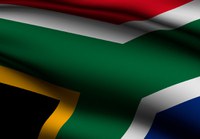The Covid-19 Epidemic And Primary School Education I – Priorities
Introduction
This brief sets out the timeline of school attendance due to lockdown restrictions, and access, or the lack of it, of learners to schools, in particular contact time and the learning process. For most learners in Quantile 1 to 3 schools, learning is heavily dependent on contact time, itself affected by restriction of movement.
Lockdown and loss of contact time
In March 2020, President Cyril Ramaphosa declared a state of emergency under the Disaster Management Act and promulgated lockdown regulations which have ranged from level 5 to level 1, with the latter being the least restrictive. The rationale for the lockdown which entailed, amongst other things, restriction of movement and closing of the economy was to curb the spread of the coronavirus (Covid-19) and provide the health system with an opportunity to study the virus and learn how to contain it. Initially, the country was placed on lockdown level 5, which included the closing down of schools.[2] During level 5, access to contact learning was zero.
The impact of covid-19 in general has been an adverse impact on the economy, loss of jobs, and illness and fatalities.[3]
The limited return to school: May to August 2020
On 1 May 2020, lockdown level 4 commenced, then on 1 June 2020, the country moved to lockdown level 3, then on 18 August 2020, the country went on lockdown level 2.[4] During lockdown level 3, schools gradually resumed on 8 June 2021, with Grades 7 and 12 returning to school 2 or 3 days per week.[5] During the implementation of this phase, fatalities and infections in schools and resulted in schools closing again on Monday 27 July to 24 August 2020.
Saving the school year
By 31 August 2020, all grades were back in school for contact learning. The Minister of Basic Education, Angie Motshekga,[6] announced a programme to save the school year. Schools were required to open from 31 August to 15 December 2020. Implementation was subject to Covid-19 protocol: sanitising, social distancing and wearing of masks. Unfortunately, this did not prevent infections in schools.[7] In total, learners had 156 days in the 2020 year with the fourth term beginning on 2 November to 15 December 2020. The normal length of the school year is 180 days.
New problems in 2021
The second wave of the infection of the coronavirus hit the country in December,[8] and the country returned to lockdown level 3 until January 2021. Schools reopened on 15 February 2021, and functioned on a phased-in rotational basis of 2-3 days per week from then until May. A directive was released by the Minister in May 2021 that all learners could return to school five 5 days per week. On 27 June 2021, the President announced a level 4 lockdown due to increased cases of infection in the third wave which resulted in schools closing on 30 June instead of 9 July 2021. The minister issued a directive subsequent that states that schools would reopen on 19 July 2021 instead of 26 July 2021.[9]
Conclusion
There are two reasons for a new long-term remote learning strategy: the first is the unpredictability of the virus and its ability to cause infections, and the second is its impact on how it affects loss of contact time especially in Quantile 1 to 3 schools. In total, on 1 June 2021, the minister has reported in parliament that schools have lost 60% of contact learning since the beginning of the epidemic.[10]
Mihloti Basil Sherinda
Legal Researcher
mihloti@hsf.org.za
[1]Schools in South Africa are group according to wealth and therefore the government provides a subsidy based on this. Quantile 1 to 3 are the poorest no-fee schools, i.e. schools where parents do not pay for schools. Oftentimes this means, these children emanate from poor households. This context is important to understand the argument in this brief. See the National Norms and Standards for School Funding. See also https://pmg.org.za/committee-meeting/30934/ . Some challenges that these no-fee paying schools are facing may overlap with Quantile 4 and 5. This brief focusses on the challenges Quantile 1 to 3 in so far as they relate to their socio-economic circumstances.
[2] https://www.gov.za/about-sa/school-calendar
[3] https://www.wilsoncenter.org/publication/impact-covid-19-south-africa
[4] For an explanation of the alert levels and their restriction, see https://www.gov.za/covid-19/about/about-alert-system.
[5]We will discuss remote-learning interventions in the third brief.
[6] https://www.sanews.gov.za/south-africa/dbe-gazettes-new-regulations-schools-reopening
[7] https://reliefweb.int/report/south-africa/unicef-south-africa-covid-19-situation-report-no-7-01-31-august-2020
[8] https://reliefweb.int/report/south-africa/unicef-south-africa-covid-19-situation-report-no-10-01-30-november-2020
[9] https://www.iol.co.za/news/politics/minister-remains-firm-all-primary-school-learners-to-return-to-school-on-july-26-ee86f07e-b87e-43f0-95f8-b3f679b8fd16
[10] https://pmg.org.za/committee-meeting/33121/

